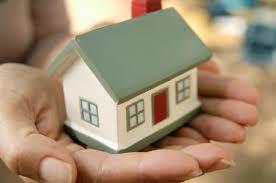Learn Basic Ways to Finance Home Repairs

Summary: Are you looking at ways to finance your home improvement project? Taking out a home improvement loan is not your only option. This article will tell you about many others.
A home improvement loan is probably the best way to finance your home repairs. Similar to personal loans, you can use them for your home improvement projects. They come with fixed interest rates and a set repayment period, which could be anywhere between three and five years.
Many home improvement contractors can lead you to lenders who offer home improvement loans. You can either go for a secured loan or an unsecured one. A good credit score however, is a must for unsecured loans.
The process of applying for a home improvement loan is quite simple. It is also easier to get the funds if the approval process of your lender is straightforward and fast. You might have to pay an origination fee that might amount to about 5 to 6 percent of your loan amount. But you will still get the loan without most of the fees and the closing costs that are associated with mortgages and home equity loans.
A home improvement loan might be a good choice if you are fine with getting a smaller amount. If you need a larger amount, you might have to approach a big bank that offers such loans. Nevertheless, the chances of you qualifying for that loan might be quite slim.
Not being able to qualify for a home improvement loan should not stop you from making your home repairs. If not a home improvement loan, you can find many ways to finance your home improvement project. Some of those include:
Mortgage refinance
If you are still paying up the mortgage on your home and if the interest rate you are paying is higher than the current market rate, a cash refi would be a great way to lower your rate. Not only will your monthly payments become more affordable, you will also get the extra cash that you might need to make your home improvements.
You can generally get about 80 percent of your home’s value if you choose to tap into your home’s equity through a cash-out refinance. This should be good enough to pay back your mortgage and finance your home repairs. However, there are a few things you need to keep in mind before refinancing your mortgage:
Although you get a bigger loan, you will still be using your home as collateral
It involves costs and fees that you have to pay from your pocket or finance through the loan
A cash-out refinance is a better idea only if the repairs that you are going to make to your home are going to increase its value.
Home equity line of credit or HELOC
Another way to tap into your home’s equity and finance your home improvement project is a HELOC. However, you can’t pay back your original mortgage when you go for a home equity line of credit. You get a line of credit that you can use as per your need, paying interest only on that portion that you have actually withdrawn. The maximum amount that you can get through a HELOC is 80 percent of your home’s value minus the amount that you owe against your home loan.
There is a draw period and a repayment period in case of a HELOC. The draw period is for about 10 years where you can draw money from your credit line and spend it as per your needs. During this period the monthly payments that you would be making will include the interest and only a small portion of your principal balance. The repayment period starts after the end of the draw period and lasts for about 15 years. The monthly payments that you make during this period would be higher as they would include a greater portion of the principal amount.
Home equity loan
In case you don’t want to refinance your mortgage, another way to finance your home repairs is by obtaining a home equity loan. Although similar to HELOC, you get a lump sum amount here instead of a line of credit. This would be your second mortgage which will probably have a higher interest rate than that of a cash-out refinance. However, the good part is that most of the closing costs here would be paid by your lender.
Personal loan
If you are not up to putting your home as collateral, it would be better to go for a personal loan in order to finance your home improvement project. The interest rates here would be much higher than cash-out refinance, HELOC, or home equity loan. But you can qualify for the best rates if you have an excellent credit score.
The time frame to repay the amount is very short in case of a personal loan. You get only about 5 to 7 years to get free from your debt. So your monthly payments would be much larger than that of any other option. This would nevertheless, be a good option if you don’t have much of equity on your home.
Credit card
It is not just to make purchases; your credit card can give you the required amount to make your home repairs too. Plus, you do get reward on every dollar that you spend. However, you will have to pay back as early as possible if you don’t want to end up paying incredibly high interest rates.
You will probably find more such options if you talk to a home improvement contractor who looks for prospects through home improvement leads. But if nothing works for you, you might have to wait for a while until you can save up enough cash to suffice your home repairs. Then you won’t have to worry about any finance charges or costs.Post Your Ad Here
Comments